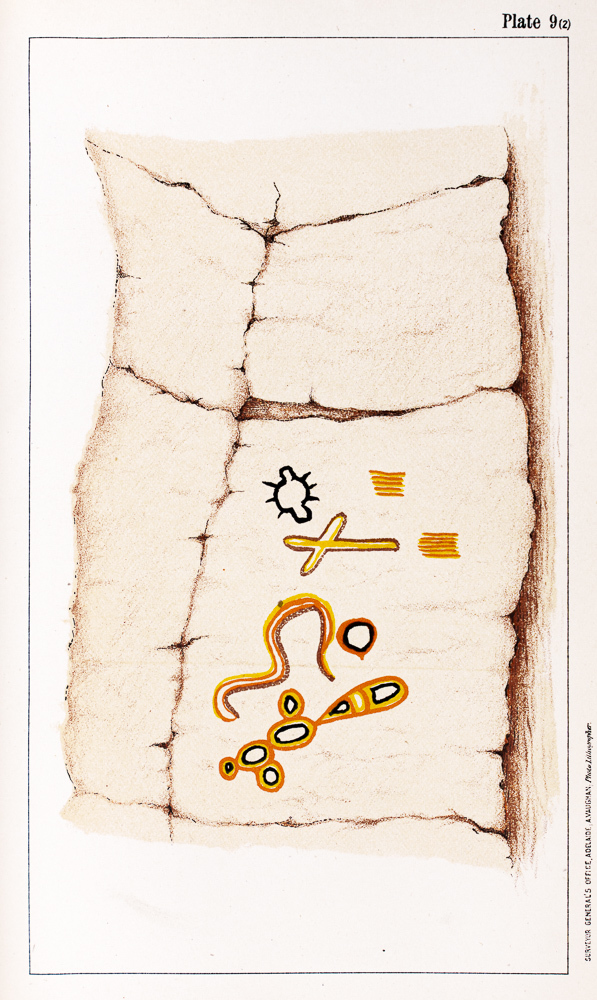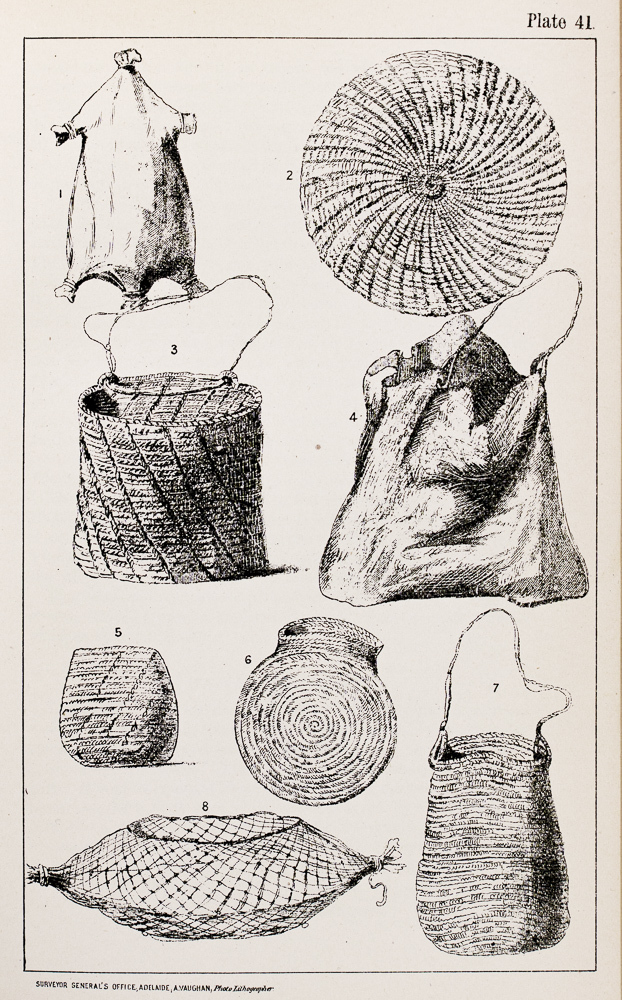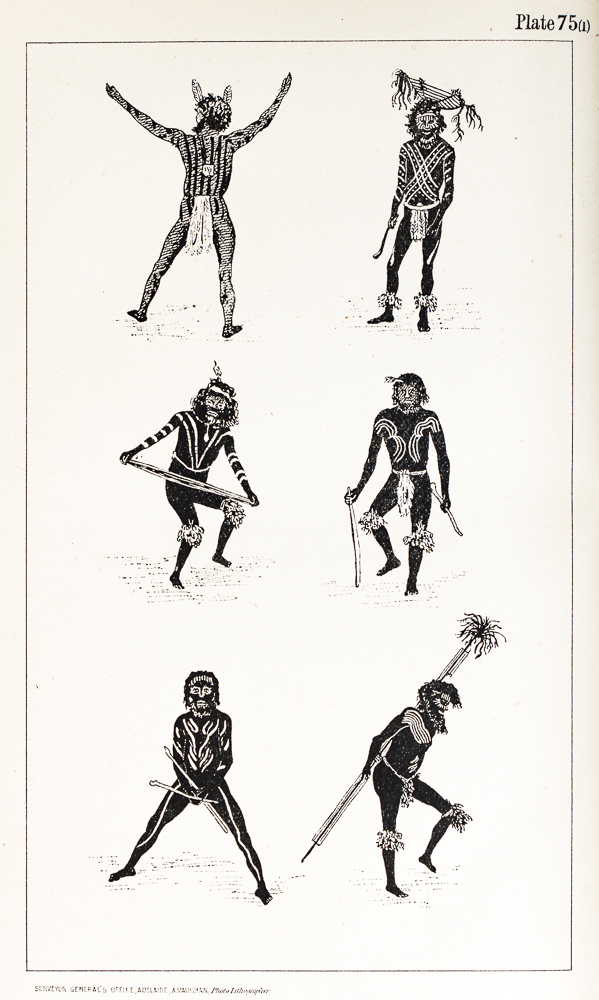
All illustrations shown here are taken from Reference 2 -Worsnop's published work by C E Bristow , Gov't. Printer 1897

Together with the South Australian Museum, the Society holds the annotated proofs for Worsnop’s ground-breaking book, published in 1897 as the first continental survey of Aboriginal art and creative expression. ‘I have endeavoured to show’, wrote Worsnop, ‘that Australia is not barren in pictography … and by comparison with the works of other nations to secure for our aborigines a due appreciation of their undoubted artistic nature’.

All illustrations shown here are taken from Reference 2 -Worsnop's published work by C E Bristow , Gov't. Printer 1897

Following his arrival in Adelaide during 1852, Thomas Worsnop (1821-1898) had a colourful career as schoolteacher, publican, bullock-teamster, pound-keeper and store-keeper for Thomas Elder, before becoming Adelaide’s long-serving Town Clerk, from 1869 to his death in 1898. His experience as a teamster and store-keeper had made him aware of the extent and sophistication of Aboriginal artistic expression (particularly in rock art) and on his return to Adelaide he resolved to devote his spare time to compiling all available records.
Aware that many elements of Aboriginal art were fast disappearing under the impact of colonialism, Worsnop’s synthesis of visual and descriptive records was impelled by a sense of urgency, in common with many other late-nineteenth century ethnographic and linguistic projects. He sought records from colonial governments, officials and interested individuals, assembling an impressive inventory of images. In the process he expanded his definition of Aboriginal art and cultural expression to include domestic utensils, watercraft, fishing technology, weirs and dams.
As an amateur, Worsnop was less bound by notions of authenticity and tradition, enthusiastically documenting examples of ‘contact art’, such as figurative carvings and drawings, carved walking sticks and glass spearheads. Rather than reproducing verbatim quotations from various authors and authorities, in academic fashion, Worsnop recast and reframed key observations (often without direct acknowledgement), but did so in clear and intelligible prose, so that his Prehistoric Works holds the reader’s attention, even today.
The handwritten annotations on the proofs of his 1897 publication provide evidence of his own humane attitudes towards Aboriginal people and his determination to bring public recognition to their artistic achievements, at a time when prevailing attitudes contrasted markedly.
Note: Illustrations are taken from Reference 1.
1. Worsnop, Thomas, "The prehistoric arts of the Aborigines of Australia", corporate author Royal Geo. Soc. of Aust. SA Branch published 1887. Spiller Govt. Printer
rga 305.89915 A938, 26p. 12 plates.
2. Worsnop, Thomas, "The prehistoric arts, manufactures, works, weapons, etc. of the aborigines of Australia" C. E. Bristow Govt. Printer 1897 xv, 172p 85 leaves of plates
rga 305 89915 W931.


© The Royal Geographical Society of South Australia